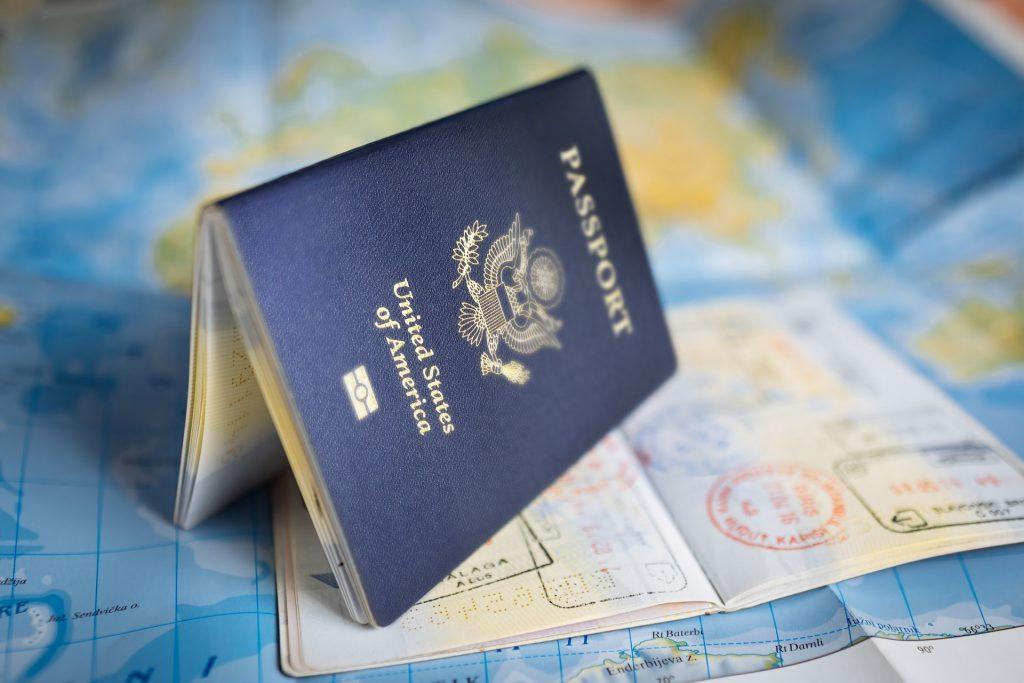A tourist visa to the United States is your gateway to exploring the vibrant landscapes, cultural diversity, and iconic landmarks that the country has to offer. However, there’s a catch – while a tourist visa allows you to visit the U.S., it doesn’t grant you the right to work. If you find yourself wondering whether you can change your tourist visa to a work permit in the USA, you’ve come to the right place. In this article, we’ll delve into the process of how to change a visitor visa to a work permit in the U.S., exploring the requirements and steps involved.
Can Work in the US with Only A Tourist Visa?
Unfortunately, the answer is no. A tourist visa, also known as a B1/B2 visa, is specifically designed for temporary visits, including tourism, medical treatment, business meetings, and family visits. It does not authorize you to engage in any form of employment or work while you are in the U.S. Engaging in work activities on a tourist visa can have serious consequences, including deportation, being barred from re-entering the U.S., and damaging your chances of obtaining a future work visa.
What Happens if I’m Caught Working on A Tourist Visa?
Engaging in unauthorized work while on a tourist visa in the United States can trigger a cascade of serious consequences that can significantly impact your future immigration prospects. The U.S. immigration system is designed to ensure that individuals adhere to the specific terms and conditions of their visa category, and working on a tourist visa is a violation of those terms. Here’s a closer look at the potential repercussions:
1. Deportation
If you are caught working without the appropriate work authorization, you could face immediate detention and subsequent deportation. Deportation entails being removed from the country and barred from re-entry for a specified period. This not only disrupts your life and plans but also comes with emotional and psychological stress.
2. Bar on Re-Entry
Working on a tourist visa can lead to a bar on re-entering the United States, preventing you from returning for a certain period, ranging from three to ten years or more. This restriction can impact your ability to visit friends and family, attend important events, or pursue future opportunities in the U.S.
3. Legal Penalties
Violating the terms of your tourist visa can result in legal penalties, including fines and potential criminal charges. These penalties can vary based on the severity of the violation and the discretion of immigration officials.
4. Negative Immigration Record
Any violations of U.S. immigration regulations are recorded in your immigration history. This record can influence future visa applications, work permit requests, and even applications for permanent residency or citizenship. Consistently adhering to visa requirements is crucial for maintaining a positive immigration track record.
5. Impact on Future Visa Applications
When you apply for a new visa or a change of status, your past immigration history is scrutinized. Having a record of unauthorized work can significantly hinder your chances of obtaining a different visa category, such as a work visa, student visa, or even a tourist visa in the future.
Can I Change My Tourist Visa to Work Visa in the USA?

While the initial purpose of a tourist visa is for temporary visits, you might find yourself in a situation where you desire to work in the United States. The good news is that changing your status from a tourist visa to a work visa is indeed possible, but it’s a complex process that demands careful consideration, thorough research, and strict adherence to U.S. immigration regulations. The U.S. Citizenship and Immigration Services (USCIS) plays a pivotal role in overseeing this transition, and it’s essential to familiarize yourself with the specific requirements for a successful change of status.
How to Change My B1/B2 Visa to Work Visa?
Transitioning from a B1/B2 tourist visa to a work visa involves a formal procedure called a “change of status.” This process is facilitated through an application submitted to USCIS. Essentially, you’ll be shifting from your current temporary status as a tourist to a new status that grants you the legal right to work in the U.S. There are various work visa categories available, but two of the most common options are the H-1B visa, designed for specialty occupations, and the L-1 visa, tailored for intracompany transferees.
What Are the Requirements for a Work Visa?
Obtaining a work visa is a rigorous process, and the specific requirements can vary based on the type of visa category you are applying for. In general, here are the key prerequisites you need to fulfill:
- An Offer of Employment – To initiate the process, you must secure a genuine job offer from a U.S. employer who is willing to sponsor your work visa application.
- Qualifications – Depending on the work visa category, you’ll need to meet specific educational and professional qualifications that are relevant to the position you’ll be filling.
- Labor Condition Application (LCA) – If you’re pursuing an H-1B visa, your employer is required to file an LCA with the U.S. Department of Labor. This step ensures that the proposed employment conditions are in line with prevailing wage standards.
- Proof of Specialty Occupation – For H-1B visas, you must provide compelling evidence that your intended occupation requires specialized skills, knowledge, and expertise that are not easily replaceable by U.S. workers.
- Employer’s Petition – Your prospective U.S. employer plays a crucial role by filing a petition on your behalf with USCIS. This petition outlines the details of the job offer and your qualifications.
- Validity of Status – It’s vital that you have maintained lawful status throughout your stay in the U.S. and adhered to the terms of your previous visa.
- Non-Immigrant Intent – You must be able to convincingly demonstrate that you intend to remain in the U.S. temporarily and return to your home country once your work visa expires.
How Long Is the Process of Getting A Work Visa?
The timeline for obtaining a work visa varies depending on the specific visa category, USCIS processing times, and other factors. In general, the process can take several months from the time you submit your application to the time USCIS reviews and approves it. Given the potential complexities and variations in processing times, it’s critical to plan well in advance. Applying for your work visa well before your intended work start date ensures that you have ample time for any potential delays and enhances your chances of a successful transition.
Conclusion
In summary, changing your visitor visa to a work permit in the USA is possible, but it involves a meticulous process and adherence to immigration regulations. While a tourist visa doesn’t grant you the right to work, taking the steps to transition to a work visa can open up new opportunities for employment and professional growth in the United States. If you’re considering changing your status, it’s highly recommended to consult with an immigration attorney or expert to navigate the process successfully and ensure compliance with the requirements. Remember, legal pathways exist to achieve your professional goals while respecting U.S. immigration laws.
